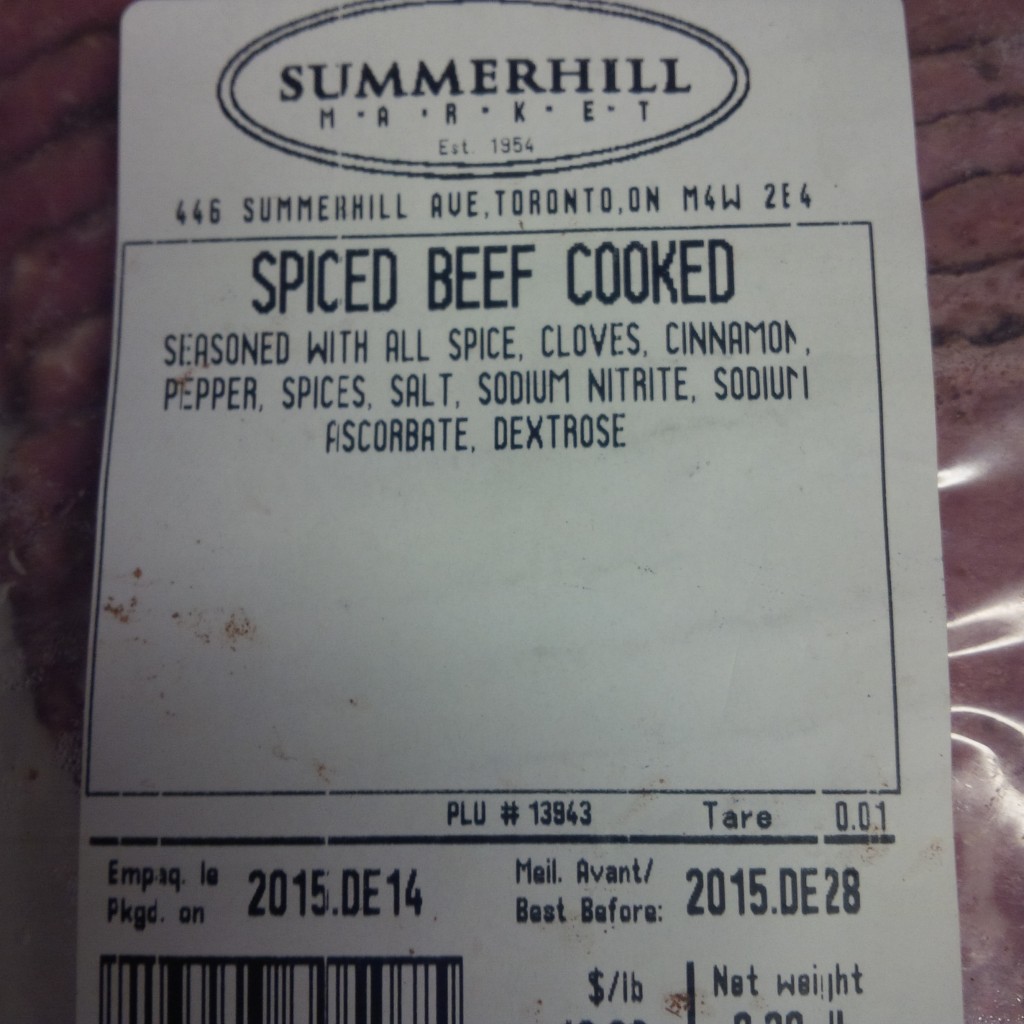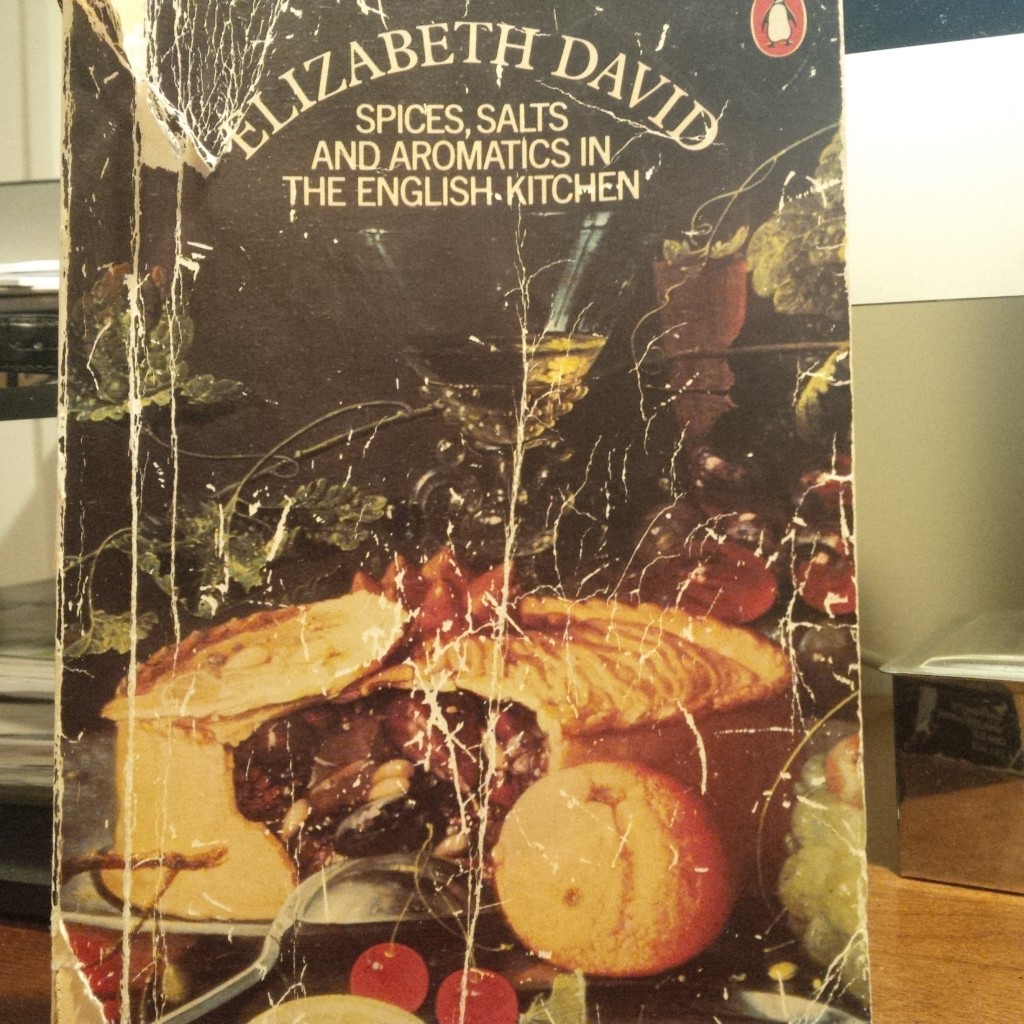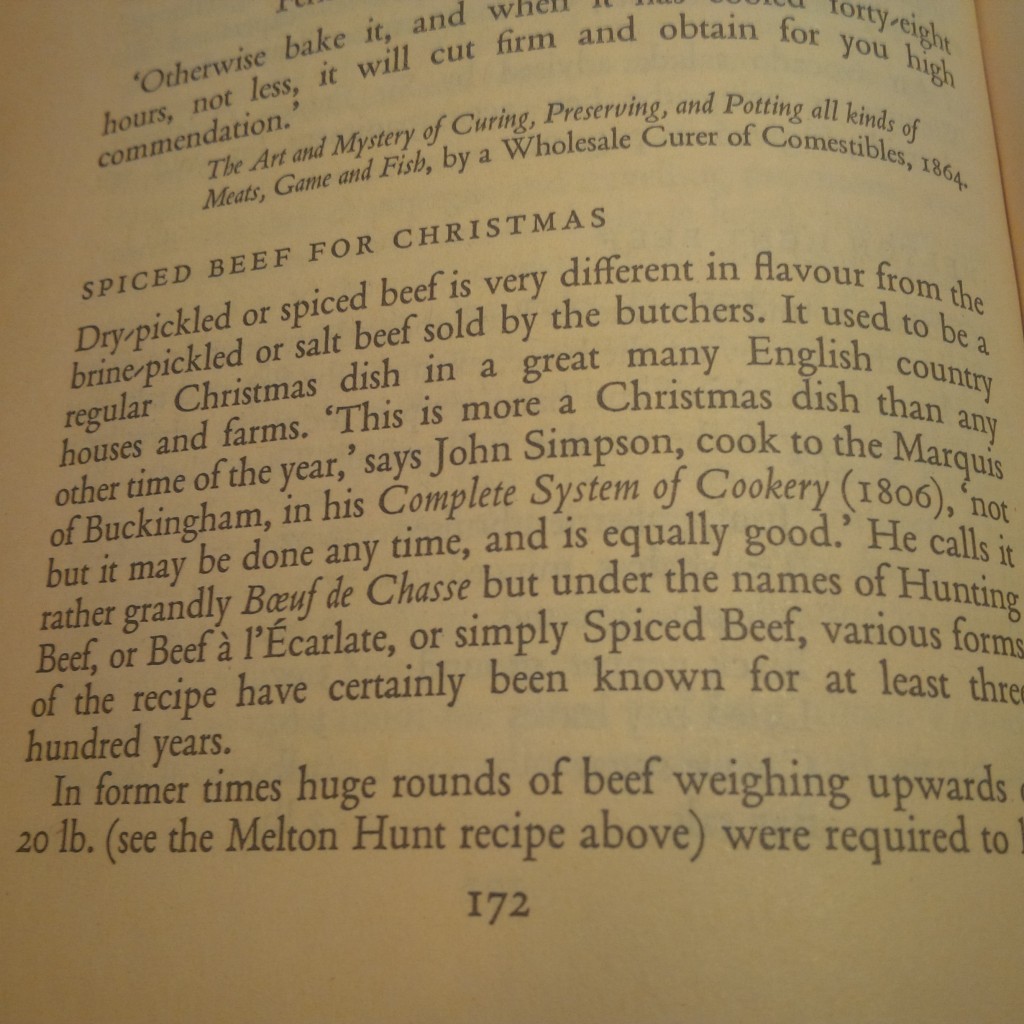Albion Teaches old Tricks
In Britain, also Ireland in past centuries a special dish was reserved for the Season: a cured and spiced round, leg, or brisket of beef. It was often prepared in manor houses or prosperous farms. The great food writer Elizabeth David devoted almost three pages to it in her classic Spices, Salts and Aromatics in the English Kitchen (Penguin, 1970).
She explained the dish had been largely forgotten in postwar London. Intent on reviving interest in the specialty, in 1958 she informed “Mr. Ducat”, “master-butcher and creator of the famous French boucherie at Harrod’s”, she would publish a recipe in the Christmas issue of Vogue magazine.
His rejoinder: I will make the dish for Christmas trade at Harrod’s Food Halls. So he did, with her advice, and it was an immediate success. By 1970 Harrod’s was selling thousands of pounds every year.
Once cooked spiced beef is scarlet, similar to corned or salt beef in this respect, but with a taste of its own. It is best prepared in a large “joint”, as the British say. Not less than 20 bovine pounds were deployed in the old days! Spiced beef was typically a set piece among other grand and festive dishes. These might include roast goose with chestnut stuffing, roast turkey, sirloin of beef, baked apple, mince pudding or pie, and baked ham.
Elizabeth David’s encomium for the dish showed her deep interest in, and respect for the traditional foods of Britain. She enjoined that the beef must be dry-cured, not brined, and its character is vitally affected if you don’t do this. She specified placing the meat in dry pickle for about one month, for maximum effect.
She felt that properly prepared, spiced beef gave some indication of the food eaten by Britons centuries ago, at least those who could afford the best to gladden the season. Spiced beef can be viewed (I am saying) as a kind of a vintage ham, a dish of the piquant and salt. It is not for every day, but not that many things are, really.
This is what the cooked result looks like, neatly trimmed for plating:
When I moved to Toronto 30 years ago a few small butchers still offered it at Christmas. Often a full leg or other joint would be displayed in the window labeled “Christmas beef” or “spiced beef”. Seeing this, I wondered what the taste could possibly be.
I am from a cured beef tradition that takes pride in its corned beef and pastrami – we know from corned beef, that is. I knew about Irish or London salt silverside, often boiled with cabbage or carrots, but British spiced beef seemed a thing apart.
I mustered the courage to buy it and was intrigued by the taste: spicy, salty, with hints of clove, nutmeg, and other scents of the festive time. The taste was unique in my experience. Good ham is the closest analogy but the beef taste, married to confectionary-style spicing, set it apart. It was both similar and dissimilar to Jewish corned beef when served cold.
These old-time Toronto butchers are hard to find, although perhaps a revivalist here and there makes spiced beef for Chriistmas.
But as Elizabeth David explains anyone up for it can make it at home. She is specific on instructions: “On no account should anyone allow themselves to be persuaded that dry-spiced beef should be boiled or simmered on top of the stove”. Yes ma’am.
She advises a simple accompaniment, sliced tomato and cucumber, or an avocado salad. These work perfectly, of course. A couple of years ago when shopping in the larder that is Summerhill Market in Rosedale, Toronto I noticed a sign in the glassed deli counter, “Spiced beef, only at Christmas”.
I thought, that’s what the little stores north on Yonge Street used to offer, what Elizabeth David memorialized in her book. Summerhill Market has kept it going, perhaps for a few tenacious old customers, or maybe just from habit.
Buying some I thought the taste excellent, similar to what David described. The ingredients they use are in the label below and the slices above, from the same package.
A few slices with good whole-grain bread, mustard, and a salad makes a satisfying meal of a late-autumn or winter evening. With sparkling wine or good ale you’re in clover. Tea goes well too, Indian tea by my lights.
Salt advisory: these old foods of pre-refrigeration days can be fearsomely high in sodium minerals, once prized for their preservative power. Spiced beef is not for those wary of the saline hit. Still, just a few slices satisfy, or this writer they do, and then the salt is not excessive. Eaten, too, with vegetables and good bread it makes a reasonably balanced meal, and certainly one of historical interest. For some that’s reward enough.




